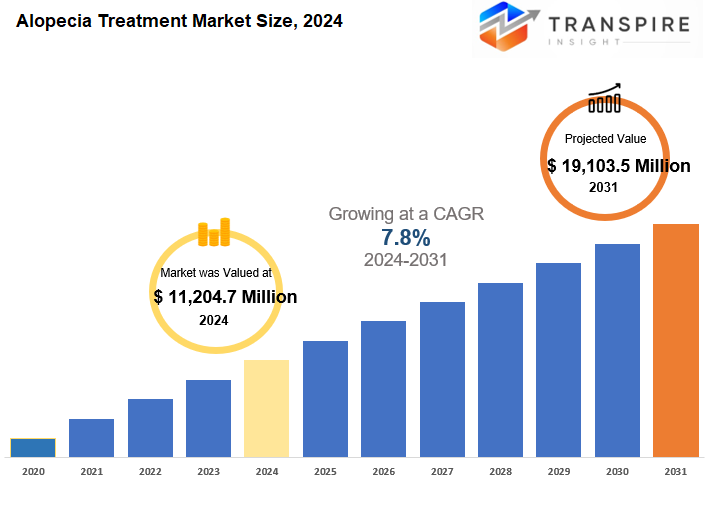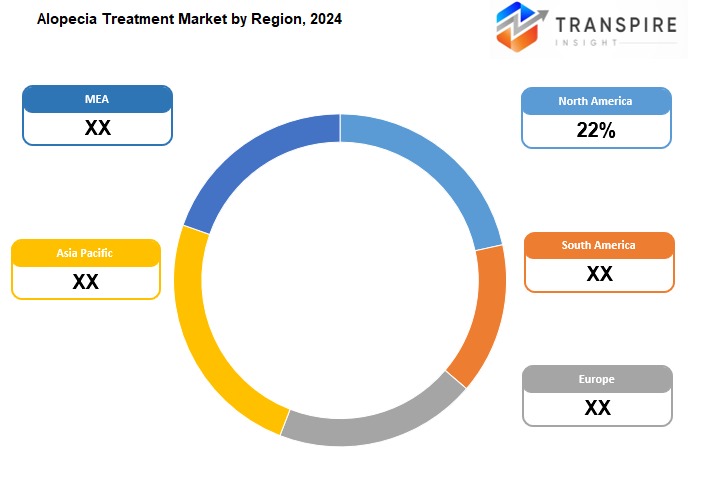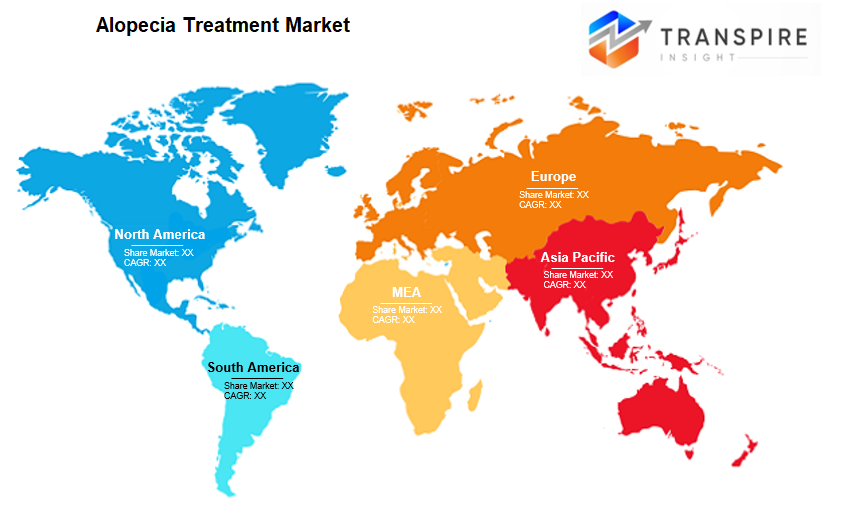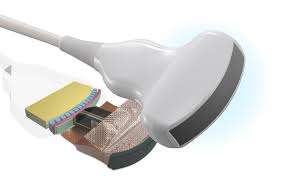Global Alopecia Treatment market is estimated to reach $19,103.5 Million by 2031; growing at a CAGR of 7.8% from 2024 to 2031.
The Global Alopecia Treatment market focuses on preventing, managing, and treating hair loss disorders, particularly alopecia. It is a rapidly growing industry with innovative medicines and therapies being developed by pharmaceutical companies and health professionals. Advances in biotechnology and medical science have led to more effective treatments with fewer side effects. Treatment options range from topical solutions to surgical interventions like hair transplantation, with a trend towards highly customized plans due to individual variations in alopecia experience.
Technological advancements, including AI and machine learning, are improving diagnosis and treatment accuracy, reducing trial-and-error approaches. Non-invasive options are in demand due to patient awareness of risks and recovery periods associated with surgery, with topical solutions like minoxidil and finasteride remaining central but with a shift towards regenerative treatments like PRP therapy and stem cell treatments.
The marketplace is expanding globally with more players entering the competitive industry, leading to diverse and innovative treatment options. Regulatory frameworks and governmental policies will play a significant role in shaping the market, as quicker regulatory approvals will allow patients faster access to new therapies, fostering growth and change in the Global Alopecia Treatment market driven by rapid advances in medical technology and increasing patient awareness.

GROWTH FACTORS
The global alopecia treatment market is expected to continue growing in the coming years due to several factors. The increasing prevalence of baldness among all age groups is driving up demand for effective treatments. Technological advancements in drug discovery and medical research are leading to the development of more potent treatment options.
The importance of aesthetics and the psychological impact of hair loss are also driving market growth, especially among younger individuals. However, challenges such as high costs and varying treatment success rates may slow down market expansion. Despite these challenges, ongoing research and development in the field offer promising opportunities for the future.
Advances in gene therapy and regenerative medicine could potentially revolutionize alopecia treatment, leading to more effective and longer-lasting solutions. As the market evolves and new treatments are developed, there is hope for improved appearance and quality of life for individuals with alopecia.

MARKET SEGMENTATION
By Disease Type
The future of alopecia treatment looks promising as medical research and technology continue to advance. The market for alopecia treatment is growing due to the increasing demand for treating various types of alopecia, including Alopecia Areata, Cicatricial Alopecia, Traction Alopecia, Alopecia Totalis, Androgenetic Alopecia, and Alopecia Universalis.
Research into autoimmune causes of Alopecia Areata may lead to new treatments utilizing immunotherapy. Advances in regenerative medicine and stem cell therapy offer hope for treating Cicatricial Alopecia. Traction Alopecia, caused by hairstyles pulling on the hair, can be prevented with proper care and may be treated with topical applications or minimally invasive procedures.
Genetic therapy and new drug treatments are being developed for more severe forms of alopecia such as Alopecia Totalis and Alopecia Universalis. Personalized medicine and artificial intelligence are also being used to create individualized treatment plans.
Overall, the market for alopecia treatment is expected to grow significantly with greater awareness and technological advancements leading to more sophisticated treatment options. With continued research, the focus is shifting towards addressing the root causes of hair loss disorders, improving the quality of life for patients and paving the way for innovative solutions in the future. Hope is on the horizon for those affected by alopecia.
By Treatment Type
The global market for alopecia treatment is growing rapidly due to increased awareness and demand for effective solutions. Different types of treatments are available for alopecia, each addressing specific causes and stages of hair loss. Topical treatments, such as creams and foams containing minoxidil, are popular due to their ease of use and minimal lifestyle changes required. Oral alopecia drugs like finasteride are prescribed to prevent hair loss by inhibiting a hormone linked to male pattern baldness, but may come with side effects.
Injectable therapies involving platelet-rich plasma or corticosteroids are emerging as a way to stimulate hair growth and reduce inflammation. Hair transplantation is a well-established treatment that involves transferring hair follicles to bald spots on the scalp, yielding long-lasting results.
Advances in technology have made hair transplants less painful and more effective. The future of alopecia treatment looks promising with ongoing research and advancements in technology, offering hope for more advanced and personalized treatment options for those suffering from hair loss worldwide.
By Gender
The market for alopecia treatment is divided into male and female categories because of the way hair loss manifests in each gender. Male-pattern balding is common in males, while females usually experience diffuse thinning. Advancements in genetic research and biotechnology are helping in developing targeted treatments for alopecia.
Gene therapy shows promise in preventing or reversing hair loss by targeting genetic markers. Regenerative medicine, involving stem cell therapy and PRP treatment, aims to stimulate hair growth and offer more definitive solutions for hair loss.
Personalized medicine, based on an individual's genetic makeup and lifestyle, could lead to more efficient and tailored treatments for alopecia, reducing side effects. The future of the alopecia treatment market looks bright with new therapies, technology advancements, and a more comprehensive understanding of the condition. Continuous research and innovation in this field are expected to improve the quality of life for alopecia sufferers and may eventually lead to a cure.
By Distribution Channel
Alopecia treatment is an area that will only continue gaining attention as medical advancements progress and our understanding of hair loss deepens. In the near future, therefore, the market for alopecia treatment will open wide with enormous growth across the global scene. This is primarily because of raising awareness on hair loss issues and higher availability of treatments. Our next analysis of the distribution channels would, therefore, make it easier to understand how the treatments will reach the people on all those aspects.
The other way alopecia treatment reaches the market is through hospitals and clinics. Hospitals and clinics primarily offer health care, offering extensive medical care services that include alopecia treatment. It is in these hospitals and clinics where many patients go to have their hair loss treated. A more salient increase in medical technology and treatment modalities will be bringing increases in the effectiveness of alopecia treatments found in hospitals and clinics in the future. Personalized medicine, which includes tailoring treatments based on the individual's genetic makeup and presenting condition, will probably become more mainstream and hospital and clinic treatments shall be more effective and accessible as a result.
Retail pharmacies are another significant channel of distribution for alopecia medicines. These outlets are readily accessible to both over-the-counter and prescription drugs. As more and more people look for working treatments for hair loss, retail pharmacies will increase their product line and offer a wider range. Innovative formulations of pharmaceuticals will indeed lead to the development of novel, more effective treatments available for acquisition in convenient locations in the local pharmacy. This easily accessible nature will allow good solutions to individuals requiring immediate and simple solutions to their hair loss dilemmas.
The online channel in regard to market share for alopecia treatments is developing rapidly. The convenience and ability to research and compare options online make the channel attractive to consumers. In the future, the online market share of alopecia treatments will increase significantly as growth in e-commerce and logistics continues to gain momentum. They should enjoy enhanced digital marketing strategies, and increased telemedicine use, which will keep fueling growth. Consumers can seek advice from the experts and buy treatments from the comfort of their home.
In total, this worldwide alopecia treatment market is due to increase in growth as new channels of distribution continue to emerge and the old ones evolve. Alopecia treatments at hospitals and clinics will always remain advanced and personalized while retail pharmacies and online merchants continue to widen access to treatments for more customers. The union of technology and healthcare will certainly make the effectivity and ease of having alopecia treatment even greater, thus offering hope to millions affected by hair loss. With these advancements, the future of alopecia treatment promises to be bright, with better results and increased benefit for patients.
REGIONAL ANALYSIS
The alopecia treatment market is seeing growth worldwide, with different regions contributing in various ways. In North America, countries like the United States, Canada, and Mexico have strong healthcare infrastructure and high awareness about hair loss treatment. Europe, including the UK, Germany, France, and Italy, combines established healthcare systems with high demand for aesthetic treatments. Asia-Pacific, with countries like India and China, is experiencing significant growth due to higher disposable incomes and awareness about alopecia. South America, including Brazil and Argentina, is realizing the demand for alopecia treatment, driven by personal grooming trends.
The Middle East & Africa region, with countries like the GCC, Egypt, and South Africa, is starting to show interest in alopecia treatments, with a focus on advanced healthcare options. The international market for alopecia treatment is expected to grow due to medical research advancements, increased awareness, and economic development. Companies in the sector are working on developing better and more affordable solutions, aiming to expand treatment options globally. Overall, the interconnected regional markets are driving innovation and progress in treating alopecia on a global scale.

KEY INDUSTRY PLAYERS
The global market for alopecia treatment is rapidly growing due to increased awareness and advancements in medical technology. Companies like iRESTORE Hair Growth System and iGrow Laser offer laser-based treatments that stimulate hair follicle growth, which has become popular for being non-invasive and promising. Fagron provides personalized medicine tailored to individual patients, understanding that the causes of alopecia can vary widely. Apple Therapeutics Private Limited offers topical solutions to promote hair growth and scalp health.
Big pharmaceutical companies like Dr. Reddy's Laboratories Ltd and Pfizer Inc are also making significant contributions to alopecia treatment by developing new and more effective drugs. Companies like Curallux, LLC and Theradome Inc. manufacture advanced laser treatment devices that are easy to use and convenient for consumers. Hair Restoration Laboratories and Cipla Inc. are developing topical and oral medications to reduce hair loss and stimulate regrowth.
In the future, the market for alopecia treatment will become more competitive, with new technologies and research leading to better understanding of hair loss and improved treatments. Companies in pharmaceuticals, medical devices, and research institutions will continue to drive advancements in the market, providing hope and better results for patients suffering from alopecia.
As technology advances, the capabilities of electron beam accelerators are expected to increase, meeting the diverse requirements of various sectors. The market is dynamic, with leading companies committed to enhancing patient outcomes and setting new benchmarks for the future.
REPORT SCOPE AND SEGMENTATION
|
Attributes |
Details |
|
Market Size By 2031 |
USD 19,103.5 Million |
|
Growth Rate |
CAGR of 7.8% |
|
Forecast period |
2024 - 2031 |
|
Report Pages |
250+ |
|
By Disease Type |
|
|
By Treatment Type |
|
|
By Gender |
|
|
By Distribution Channel |
|
|
By Region |
|
|
Key Market Players |
|



_page-000114.jpg)
_page-000177.jpg)
_page-000176.jpg)
_page-000175.jpg)
_page-000174.jpg)


8.jpg)



 APAC:+91 7666513636
APAC:+91 7666513636





